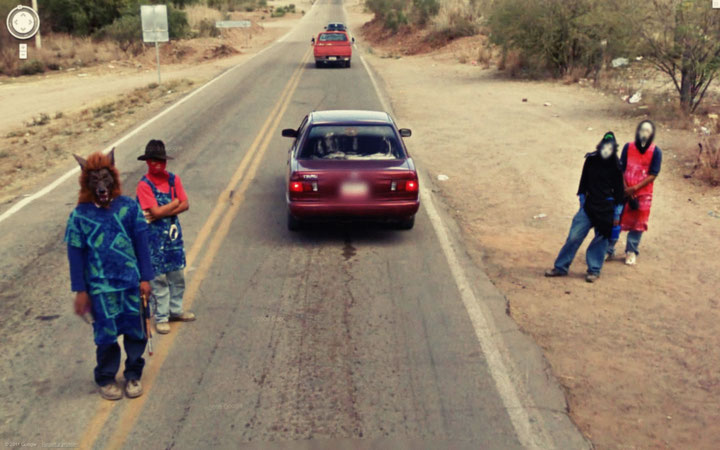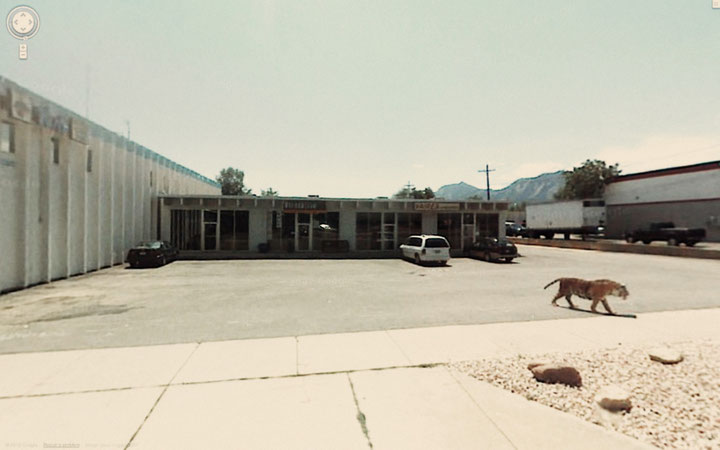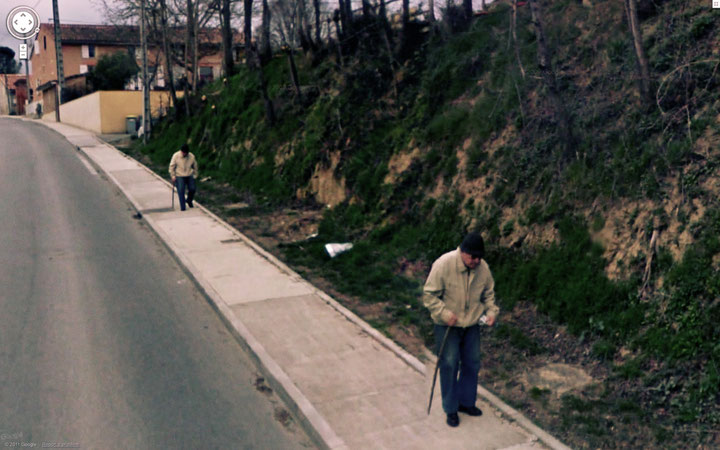Issue 2/2013 - Net section
New Vision: A Retrospective View
On the phenomenon of the “New Aesthetic”
To still speak of New Media nowadays would be rather old-fashioned. Digital technology pervades virtually every area of our lives; it has become omnipresent and therefore difficult for us to see. Following the onset of the “post-media condition”1, “post-digital tendencies”2, and most recently even the “post-internet”3, the time has come for something new. We need a description of our condition that is not based on the afterwards, but rooted in the here and now: “New Aesthetic”4 is the term coined by the London-based designer, artist, and author James Bridle, who therewith delivered the internet buzzword of the year 2012.
Bridle’s online, open-source research, in which he illustrates the relationships between real and virtual spaces, everyday life and the internet, human and machine, does not focus however on the strategies that are increasingly fraying our digital world. On the contrary, the very moment of disruption, when digital technologies free themselves from their immaterialization and force their way back into the foreground of perception is exactly what the “New Aesthetic” is all about: rasterized aerial photographs taken by surveillance drones mix with Gerhard Richter’s window for the Cologne Cathedral, blurred faces in Google Street View are combined with fashion sporting pixel designs, and photographs of buildings are published that function within their real urban surroundings like 1:1 models created using a 3D drafting program. This is but a small selection of the heterogeneous manifestations that converge under the label “New Aesthetic.” “New Aesthetic is not a movement, it is not something you can do,” Bridle writes in his blog, refraining from providing any verbal explanation of the “new way of seeing” propagated by his images.
“Defining the New Aesthetic is inevitably problematic,” says the book New Aesthetic, New Anxieties5, published by the Rotterdam V2_ Institute for the Unstable Media in June 2012. “It is a mood, an attitude, a feeling, a sensation.” All authors involved agree with James Bridle on this point: the “New Aesthetic” cannot be grasped without becoming deeply enmeshed in the very same network that this phenomenon emanates from. “New Aesthetic” is to be understood as a work in progress in two respects: on the one hand, as the “new form of perception” postulated by Bridle, which is just in the process of taking shape from many individual, loosely connected experiences circulating mainly on the internet; and on the other, as the perception of a world in-between the real and the virtual, which exists in a constant state of becoming, indeed veritably becoming trapped there.
Aside from pictorial phenomena from mainstream and pop culture, which join with political and scientific elements to form the “New Aesthetic,” artistic works situated at the interfaces between analogue and digital are also associated with the term. One example is the project The Nine Eyes of Google Street View6 by Jon Rafman, a Canadian artist, who brought the psychogeographical methods of the dérive into the 21st century. Using the camera developed by Google especially to fill the Street View service with images, Rafman roams the streets portrayed photographically by the major corporation on his computer, gathering all the curiosities he finds during these virtual strolls. The pixelated snapshots are images of a reality reproduced by Rafman through screenshots. Taken out of internet circulation and re-introduced into it, these pictorial objects are no less real than the realities they depict: people in absurd postures or intimate situations, a tiger sauntering through the parking lot of an industrial site, or a man with a cane who appears twice in the same photo. “The ‘New Aesthetic’ is unconcerned with mimesis,” the artist and author Curt Cloninger claims in Mute Magazine7, not only encapsulating the effect of Jon Rafman’s photographic readymades but also boiling the process-oriented phenomenon of the “New Aesthetic” down to its essence: “An NA image is not a representation of an object. An NA image is the accidental visual remnant of a performance or the execution of a process. The process never deliberately changes in order to become an NA image. The NA image is a trace, a relic, a waste product, a residue, a (possible) point of reference. The NA image’s content is the process itself.”
The “New Aesthetic” was practically ennobled in the eponymous essay8 published by the science fiction author Bruce Sterling last year in his online journal Beyond the Beyond. According to Sterling, the “New Aesthetic” represents “an eruption of the digital into the physical,” the consequences of which allow us “to make the lava-buried ground artistically fertile and productive. Lush, humanistic, exotic fruits will grow from that smoking, ash-covered techno-rubble of ours, someday.” Aside from this wealth of metaphor, Sterling also articulates the phenomenon as a “theoretical subject” and a “shareable concept” consisting of many, freely accessible individual parts that are patched together in the here and now. The qualities of the “New Aesthetic” could be said to lie specifically in this shadowy nature. Due to the fact that this phenomenon is both an aesthetic experience as well as a practice that reflects on its own circumstances, it tends to inhabit the boundaries between dichotomous terms such as real/virtual, merging them into a new unity.
“The ‘New Aesthetic’ is an avant-garde,” Sterling posits, “and it commonly takes years for society to internalize an avant-garde. In 2012, premonitory blogposts; in 2022, solo shows and coffee-table books.” These visions of the future spread by the founder of Cyberpunk, together with James Bridle’s idea of “a new way of seeing,” will perhaps come to pass. It is questionable, however, whether this will happen under the catchword “New Aesthetic,” which after all was being bandied about as long ago as 2012. Even if it did, it would presumably only be in a retrospective sense. “Post-New-Aesthetic” is an even more recent phenomenon.
Translated by Jennifer Taylor
1 Rosalind E. Krauss, A Voyage on the North Sea. Art in the Age of the Post-Medium Condition. London 1999.
2 Kim Cascone, “The Aesthetics of Failure: ‘Post-Digital’ Tendencies in Contemporary Computer Music,” in: Computer Music Journal, Vol. 24, No. 4, 2000, pp. 12–18.
3 Marisa Olson in an interview with Régine Débatty, March 28, 2008; http://we-make-money-not-art.com/archives/2008/03/how-does-one-become-marisa.php
4 James Bridle, The New Aesthetic; http://new-aesthetic.tumblr.com
5 Michelle Kasprzak et al., New Aesthetic, New Anxieties, V2_ Institute for the Unstable Media, 2012; http://v2.nl/publishing/new-aesthetic-new-anxieties
6 Jon Rafman, The Nine Eyes of Google Street View; http://9-eyes.com
7 Curt Cloninger, “Manifesto for a Theory of the ‘New Aesthetic,’” Mute Magazine, October 3, 2012; www.metamute.org/editorial/articles/manifesto-theory-‘new-aesthetic’
8 Bruce Sterling, “An Essay on the New Aesthetic,” Beyond the Beyond, April 2, 2012; www.wired.com/beyond_the_beyond/2012/04/an-essay-on-the-new-aesthetic/




